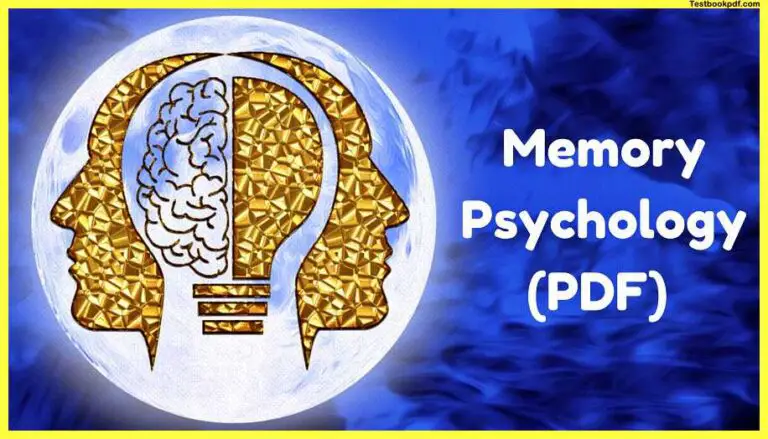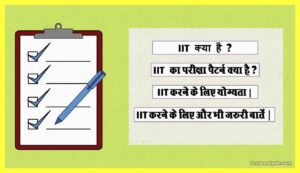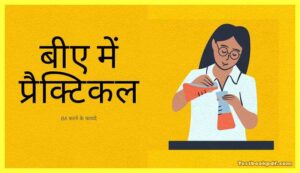Memory Psychology Pdf (Part-1)
Today In this article, we are going to learn about Memory, Memory Psychology Pdf Download, What is memory, Structural features of in-memory models, and Sensory memory through some experiments. Now we have been in this course talking about different cognitive phenomena and what those cognitive phenomena mean to us and how they help us live our lives and how they help us interact with the environment.
Now if you actually take a survey of whatever mental processes one does and whatever these mental processes help us achieve in life help us do memory appears to be a very interesting one why because memory is probably the all-pervasive mental phenomenon that is going on all the time today we will try and see what memory is about generally if I were doing it in a classroom I’d ask you to generate a definition of memory.
Memory
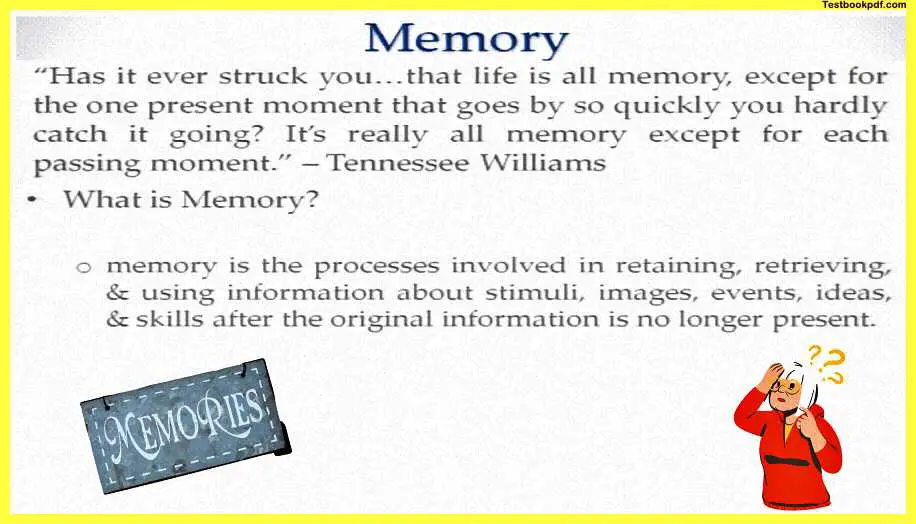
So what you can do is decide how you define memory quickly generate a very small maybe a one-liner or a two-liner definition of memory and keep it in your mind while i talk to you about something and how formally memory has been defined now as going through when I was going to make this thing there is this quote of Tennessee Williams that i found out and Tennessee Williams says very interestingly he says has it ever struck you that life is all memory except for the one present moment that goes by so quickly that you hardly catch it going its all really memory except for each passing moment.
Now if I were to ask you which is that mental phenomena which is that cognitive process that gives you the sense of self that gives you this that a sense of continuity that you are existing in this world that you are the same person that you were yesterday and for example, while you’re planning about your future you will be the same person that you today are everything that about this world everything that you have ever done everything that you have ever experienced says.
For example, seen heard tasted smelled everything that you have done on the face of this earth till this particular point in time while you are watching this particular article is all part of your memory obviously it might be different than you might recall some parts of those things very vividly some of those things not so vividly but they are still stored somewhere at the back of your brain somewhere in the in your head and they form what is called memory, in this particular chapter while talking about memory I will talk to you about.
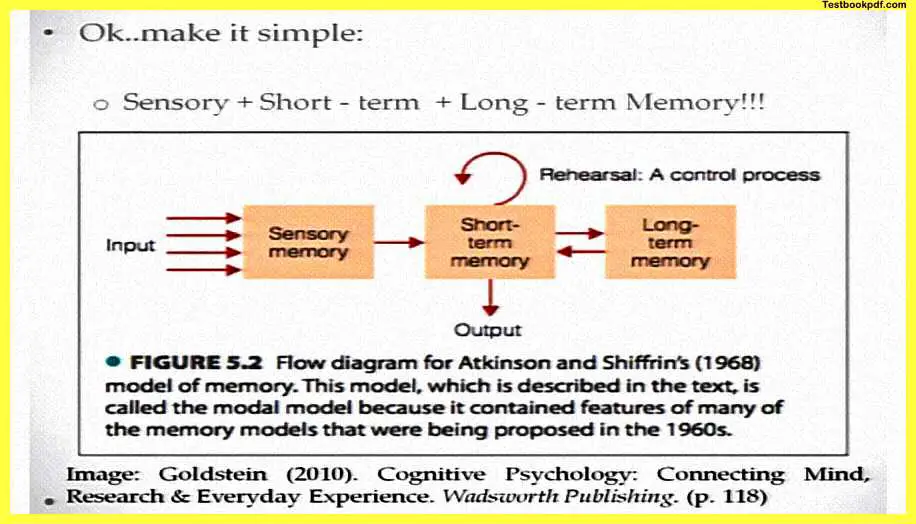
For example, the processes that help you store this information the processes that help you organize this information, and also the processes that help you use this information to do a variety of things.
For example, I give you a task here to add 2 plus 2 to do some multiplication or let us say to tell me a story or to if I ask you to describe to me what you did last evening anything that I will ask you to do will require you to draw on your memory and will require you to actually use your memory to look into this in the shells of the memory and bring out information also if I do not ask you to do any particular task.
For example, if give you an apple to eat you will need to draw on your memory that the apple is the fruit and it is edible to actually act on that particular apple again you are using some of your knowledge on something that is there some part which is obviously part of your entire larger memory system to be able to do anything that you would want to do a lot of people would say that even processes like thinking and dreaming and desiring have a lot to do with your memory whatever experiences you’ve had over time how have you organized those experiences which of the events you have found that were very important to you have still been kept almost as we would say.
For example, I ask you to describe to me a vacation or a holiday that you spend at least five years or 10 years ago and tell me in great detail about what you did during that vacation if that holiday were particularly pleasant or even in some sense unpleasant experience if it was salient and if it were distinguishable for all the mundane everyday activities it’s quite possible that even though the holidays 10 years or 15 years when 20 years back from.
Now you might be able to recall it you might be able to really vividly relive it in the current moment by drawing upon your memory so in this chapter we will be spending a lot of time talking about different aspects of memory in the first few articles I will be talking to you about a particular model of memory that was given by Atkinson and Shiffrin wherein they basically divided memory into sensory in the short term and working memory.
We will talk about that we will go further and talk about long-term memory as well which is basically about the information that you have you had kept for a longer time we will be talking about errors in memory we will be talking about what the brain has to do with memory what it happens with when a particular area of the brain is not responding we’ll be doing all of that in the course of the next few articles and basically trying to understand how memory as a cognitive function really helps us find that sense of continuity of life find that sense of being who we are.
So with that kind of background with that kind of informal background let us try and define what memory is I’m hoping that you had kept a two-liner definition near your mind and I’m now asking you to match that definition with the definition I am giving up here so my definition of memory again may be picked up from a particular book is that memory is the process involved in retaining retrieving and using information about stimuli images events ideas skills and a lot of things you might add after the original information is no longer present so that moment has passed that stimuli are not in front of you anymore.
For example that simply has come to you after a long time all of these things how do you retain that information how do you retrieve that information from the back of your mind and how do you start using that information suppose you met somebody two years ago on a particular railway platform or maybe in a theater and now you meet him right in front of your house doing something and you kind of realize this is the person I know and you’re kind of going to talk to this person so all of those kinds of things everything in that sense that you are going to do will draw upon your memory.
Clive Wearing
Now there is an interesting case of a patient called clive Wearing, he is probably referred to as the 10 seconds man or the 7 seconds man you can find a video documentary of his on youtube Clivering what a man basically he had a particular kind of amnesia a disorder of memory where he could not recall anything for more than a matter of ten seconds.
Now clive heard us maintaining a particular diary and one of these people went through his diaries and there is an excerpt there is a description of office diary right here I’ll just read it to you to give you the perspective of what happens when memory is actually not around when memory kind of gets damaged in a particular way so this feeling of that loss of continuity this feeling of loss of the sense of selfhood can really exist which is made really abundantly clear by if somebody goes through clive Wearing diary and it contains hundreds of entries and I’m quoting i have woken up for the first time or I am alive or things like that he has no memory of who he is he has no memory of any past he has no hopes of remembering anything in the future and those kinds of things what does he do how does he maintain his diet it’s a very interesting documentary I’m sure you’ll find it on youtube if you look for it.
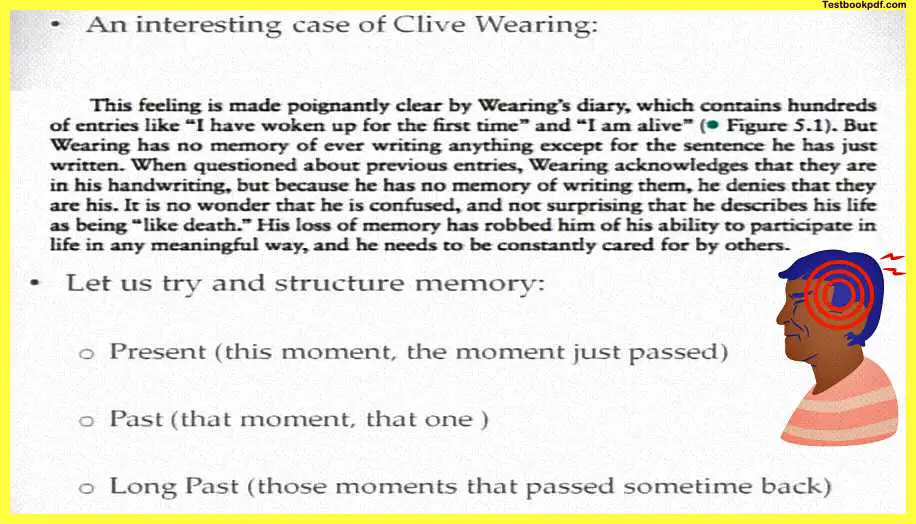
So clive Wearing has no memory of ever writing anything except for the sentence that he’s just written so you give him his diary that you have been maintaining this diary all while long I will turn through those pages as if it is some strangest diary as if he is saying that seeing that daddy for the first time as if he is writing anything ever for the first time people have tried to question clive Wearing people have tried to question him about these previous entries and varying then acknowledges that they are in his handwriting so he remembers this is my handwriting but because he has no memory of writing them he denies that they are his so even something that is happening right in front of you imagine if you cannot really recognize that is it you or is it somebody else or does it really belong to you that is that kind of is a very major setback.
Now it is no wonder if somebody has that kind of memory loss and the kind of loss that wearing is having is really confused and is not surprising that he describes it as being like death his loss of memory has dropped him off his ability to participate in life in any meaningful way and it needs to be constantly cared for by others so memory in that sense is that cognitive function if I may take the liberty of saying so on which all the other cognitive functions are actually based and are function it’s like the operating system is like the background against which all the other cognitive and mental activities are taking place and everything is taking place in this in the reference or in the frame of this particular memory so in that sense I think I have talked enough about how important memory is as a cognitive function and I think that will be reflected in the amount of time we kind of are going to talk about memory and the different aspects of memory in this part of the course.
This memory for you how would you really organize memory a very simple way of saying this is using the help of English they could be the present or the present tense say for example this movement this moment and the moment and actually just passed as I was saying it so the past is already as recent so that moment the one that passed and the long pass will be that moment say for example when I had begun this article, so memory in that sense can be organized into present and past and something that is long past okay because memory is only about things that you’ve already experienced it does not really have that any sense of future or the thinking or something like that.
Now here is the flow diagram of Atkinson and Shiffrin’s model of memory and this model again this figure is drawn from Goldstein’s spoken cognitive psychology here you can see there are three aspects of memory that Atkinson and Schifrin define say there are at least three parts to memory the first part is sensory memory.
So as you are experiencing the world through your five senses there is information that is imprinting impinging on these senses and while this information is impinging on your senses you might have a recollection of them and that is what is your sensory memory it is very very little and we will talk about this this span and those kind of things in today’s article at a later point in time the second important aspect of memory that atkinson is shifting define is the short term memory there in some information for a very short term you probably want to do something with that information use it in some particular way the third is long term memory things which have you have experience long back and not really very long back things like starting from a few minutes to few hours to few decades and you’ll see that there is a constant give and take between short-term memory and long-term where you say for example today i ask you about your address about where you’re living or where you living five years ago you will draw that information from your long term memory bring it to the short term memory and give me a particular output.
So you will see the output is linked to short-term memory anything that is performative anything that you are doing in this world will draw on what is called your short-term memory, input is first addressed at the sensory stage so that is your sensory memory.
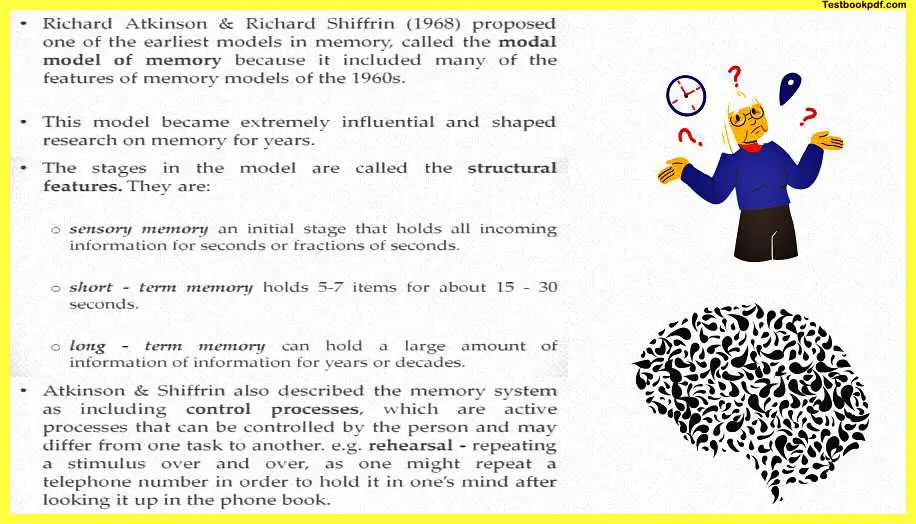
So Richard, Atkinson, and Shifrin gave this model in 1968 and this model was referred to as the modal model of memory because it included almost everything or almost the different kinds of features that were present in memory models of those days this model had been extremely influential and kind of shaped and gave direction to memory research for a lot of years for many years that were to come.
Now the stages in this model are called structural features, so these are components of memory so to speak the first component is sensory memory, sensory memory is that initial stage that holds all the incoming information from the senses remember I have not talked about attention yet so I am talking about all the information that is coming in that stays for around almost just a fraction of a second or just a few seconds this is what is your sensory memory from sensory memory if you, for example, attend some information it goes to your short term memory it is held there for around 15 to 30 seconds and it has a very small capacity of around five to seven items so how the sensory information is passing from the sensory memory coming to your short term memory for further processing but it still stays there for.
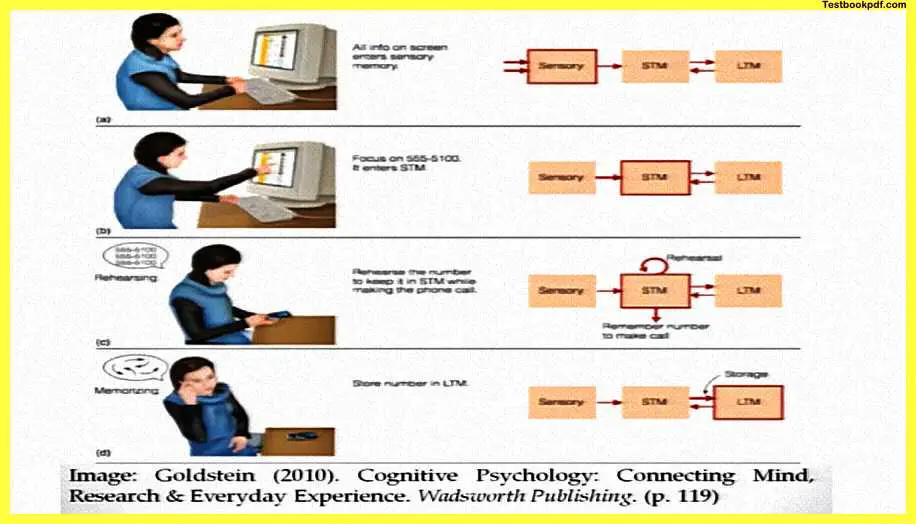
Now for not more than 15 to 30 seconds the important part the part on which we draw upon for doing anything is called the long term memory, the long term memory can hold a large amount of information over years decades if i if you were say for example 25 years of age if i ask you things that happen to you while you are five years of age you will at least remember some salient things maybe you will remember something very specific from your childhood that whereas where has it been all the while because you’re not constantly thinking of that thing while you’re living your life so it was tucked away very safely very in a very well organized way in somewhere in the back of your memory scope or memory store and given a particular queue given a reason to recall it you will certainly recall it so that is what long term memory is there is no real not a lot of studies done about the limitation of size in this long-term memory but certainly any information past 30 seconds or past one minute till maybe the time since you were born is all there in your long-term memory.
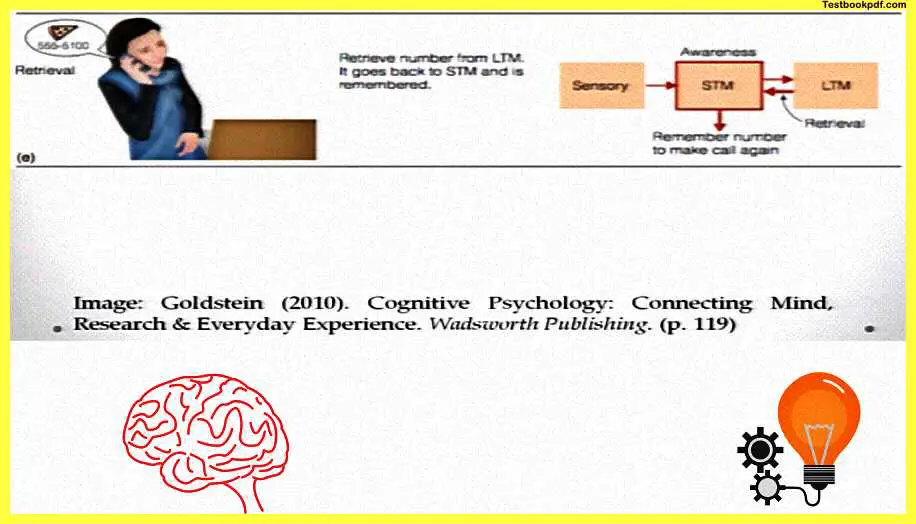
Now Atkinson and Shifrin also describe the memory system as including.
What are Called Control Processes?
So they said this there are these control processes that are active and can be controlled by the person and then may differ from one task to the others if I am giving you a particular task to remember something to remember a set of digits to remember a particular number of words or sentences you might engage in what is called rehearsal, what is rehearsal DSL is simply what people do repeating a stimulus over and over again as one might repeat a telephone number say for example in order to hold it in one’s memory and so that one does not have to look in the phone book.
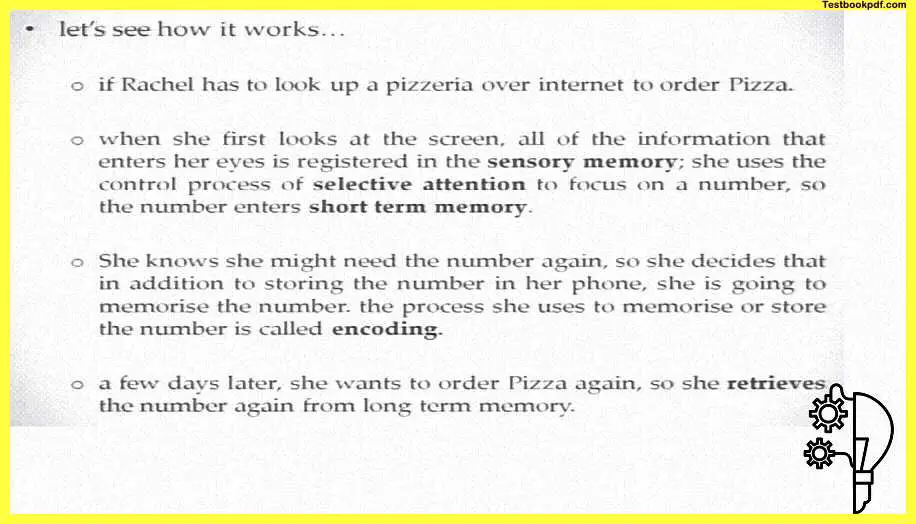
For example, if you are on the phone somebody is telling your particular you cannot find that paper you might want to keep repeating that number till the time that you get a paper or pen or say for example till after you have cut the call and you can save that in your mobile phone let us take an active example again borrowed from Goldstein’s book say for example there is a girl called Rachelle and she wants to look up a pizzeria in order to ask for a pizza so what she would do is she goes on the internet she looks on the screen all of the information that enters her eyes is registered in what is called the sensory memory.
Sensory Memory
So if you are looking at a particular page on the internet your kind of all of that sentences and everything is coming into your eyes that is what is called the sensory memory, every information getting registered is the sensory memory.
Now she has to use the control process of selective attention because she wants to look for a particular pits area or she wants to say she gets attracted by a unique name of a particular pitch area so she does she focuses on one particular number and because she is focusing on this particular number this has entered what is called her short term memory, later she knows that she might need to call the number again to order the pizza next time and again she does not want to go to the internet and do that process again.

So what she does is she decides that in addition to storing the number in her phone she is going to memorize the number maybe there is somebody who would want to remember information as well so she kind of tries to memorize this thing so what she does is she does some rehearsal she processes the process that she used to keep this number via rehearsal is referred to as encoding so what she is doing is by rehearsal she is encoding this information storing it somewhere in her brain so that she can call that number back to ask for the piece so a few days later she wants to order piece again she will need to retrieve this number again from her long term memory and dial that particular number.
So again a graphic here panels a b c and d panel a she is actually looking through for the numbers in the same they are there in the sensory memory panel b she is focusing on a specific number which then enters the short term memory panel see she is rehearsing to encode that number in the long term memory.
So that she can call upon that number at a later point in time so here is via rehearsal information grows from the short-term memory to the long-term memory and it stays there and becomes part of whatever that large storage thing is for so she needs to call the pizza next time the other day maybe next week then she can from her memory recall and use that number to dial for a piece obviously she can look in the phone as well but maybe say for example if she wants to recall and use it she has at least memorized the number maybe she has to tell it to somebody or something like that.
So here you saw how a very simple task of looking for a pizzeria calling it does involve all three kinds of your memory it involves control processes like selective attention and rehearsal and using these control processes that is how you deal with the information that you’re getting from the environment most times it could be any other example it could be an example with meeting somebody and those kind of things.
Let us now talk about sensory memory I will be going to each of these processes now in some detail so that we kind of understand them in more in a much better sense so sensory memory is the retention time for very brief periods of time of the effects of sensory stimulation so sensory memory is the retention for brief periods of time of the effects of sensory stimulation if you see something if you hear a fading voice if say for example you see a moving sparkler I think we have done it a lot in Diwali or some kind of festivals if you actually take the sparkler and if you kind of move it around you will see this wave of smoke that gets formed and you kind of remember that wave of smoke and that is basically what has registered on your sensory memory.
Now as you swing this something that I already talked about so as you spring the swing the sparkler through the air creating a trail of light you would realize that there is actually no light present at that point along this trail you are moving this you see that there is light moving but you have actually moved the sparkler away from that position you still see that trail of flight that trail of light being there because you’re seeing it is basically referred to as persistence of vision.
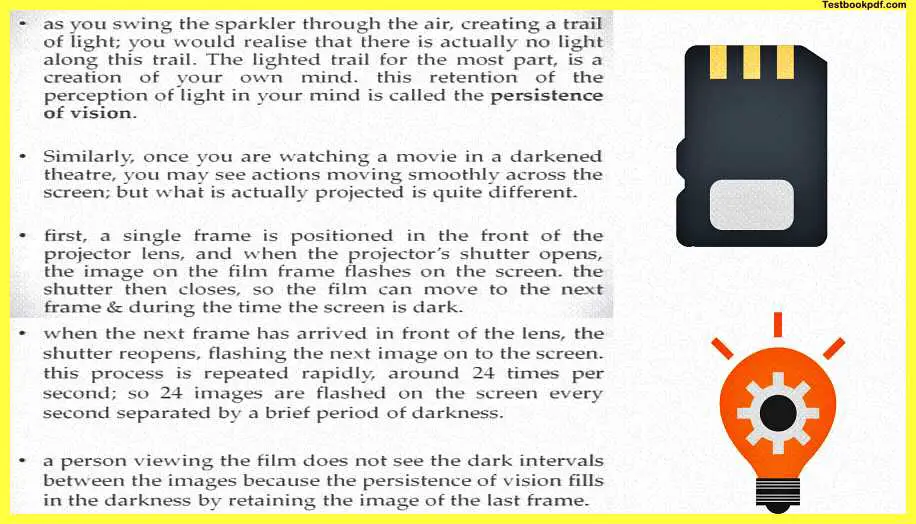
So even though the lighter trail is not there is creation this is the one which you are seeing right away is the creation of your own mind and this retention of that visual perception is called persistence of vision, you might see that in some time say for example it might also happen that somebody said something to you and he’s gone away but that voice keeps ringing in your ears that is probably persistence of auditory information.
let us take this example if you are watching a movie in a darkened theater you may see actions moving smoothly across the screen but what is actually projected on the screen is quite different from what is predicted on the screen basically is a single frame and then the other frame and then the other frame in quick succession from each other but what you see because of this persistence of vision is a continuous movie so a single frame is positioned in the front of the projector lens then when the projector shutter opens the image on the film flashes on the screen the shutter then closes so the film can move on to the next stream.
So basically it is frame by frame you are being shown particular stills but if all of those stills are shown in a particular sequence say for example what is called frame rates per second (FPS) then what you will see is you will see a particular movie when the next frame has arrived in the front of the lens the shutter reopens the flashing the next image on the screen and it kind of happens around 24 times per second so 24 images are flashed on the screen every second repeated by a brief period of darkness but you do not see the darkness you do not notice that these are separate frames and in that sense, you basically are using this persistence of vision to construct out of your own mind what a movie is like so a person viewing the film does not really notice these dark intervals between the images because of persistence of vision and because this persistence of vision fills these gaps of darkness which are there between the changes of each frame.
Sperling’s Experiment
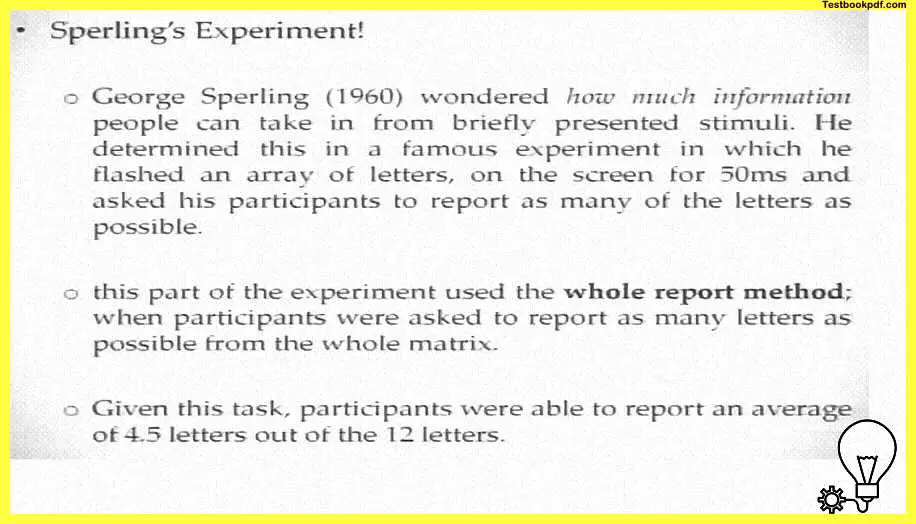
Now i will describe to you a very interesting experiment that is kind of drawing on this particular phenomena George sperling in 1960 wondered how much information people can take in from very briefly presented stimuli so he determined this in a famous experiment in which he flashed an array of letters on the screen for around 50 milliseconds is a much smaller time period and then asked his participants to report as many of the letters as he can so this part of the experiment was called the whole report method.
So the idea is some array of letters will be flashed for around 50 milliseconds and the participant will be asked to report the number of letters and the number of digits that they actually see so given this task what happened was that the participants were able to report on an average around 4.5 letters out of the 12 letters so this is how it was done if you can see at the first panel the whole report panel there were three rows or four letters each and every time the participant is just being able to tell about four or five letters.
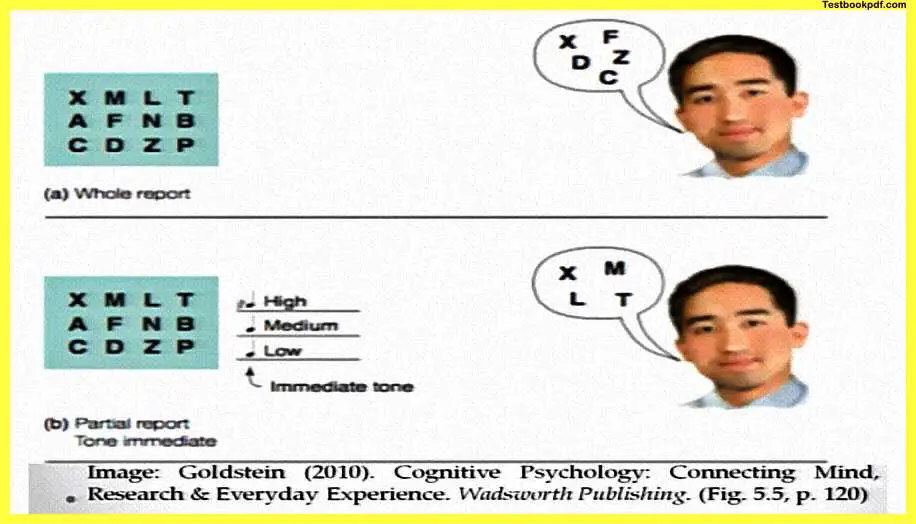
So in the next version what he decided he decided to use what is called the partial report method, so what he did was he presented the matrix for 50 milliseconds before but he sounded one of the following tones after the matrix presentation to indicate which row of letters the participants were to report so if it were a high pitched tone then it would the top row that they had to report if they were medium piston then they had to report the middle row if there is a low fish stone they have to talk about the lowest row because the tones were presented after the letters turned off the participants attention was directed not to the actual letters because they have come and gone but to the persistence but to the trace of of those letters that are remaining in these participants minds once the letters have been turned off so this is an example of what the partial report method was like what do you predict would have happened when the q tones directed the participants to focus their attention on one of the rows they correctly reported an average of three point three or four out of four letters so the accuracy and the amount of the information they could.
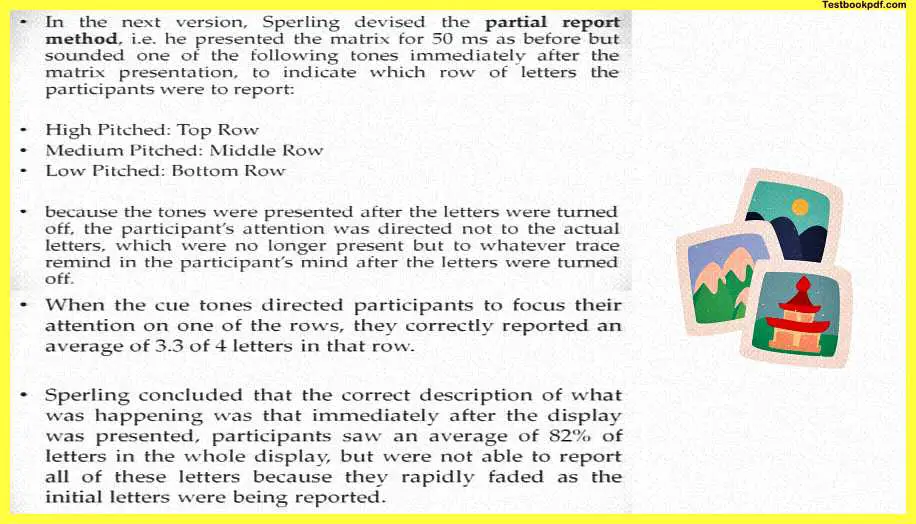
Now report has been enhanced quite a lot because they are being told to focus on a very limited span of information sperling concluded from this experiment that the correct description of what was happening was that immediately after the display was presented participants saw an average about of 82 percent of the letters in the whole display but they were not able to report all of those letters because they rapidly faded away after the initial letter was being reported the spelling then he does an additional experiment to determine the time course of this waiting so he wanted to check what is the time course in which this information fades away.
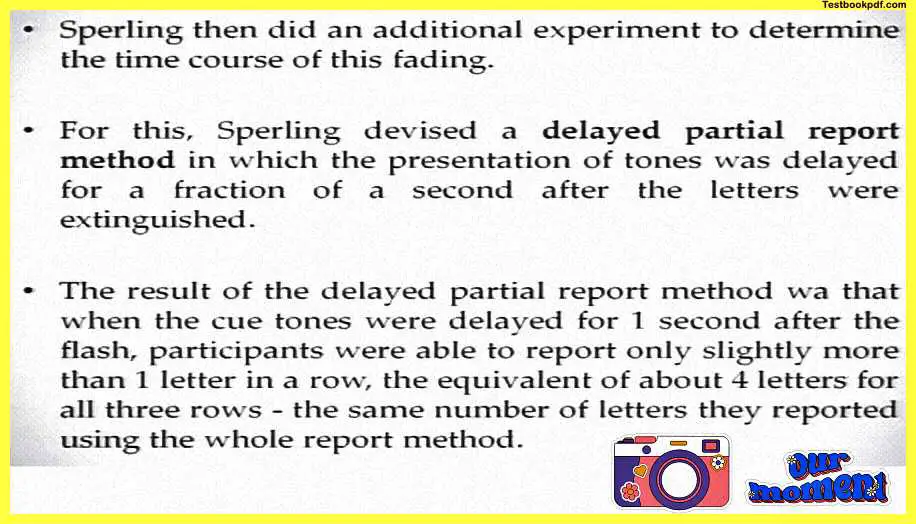
So for this spoiling device a delayed partial report method in which the presentation of tones was delayed for a fraction of a second after the letters extinguished so basically it’s about giving them time to rehearse this thing so the result of this delayed partial report method was that when the q tones were delayed for one second after the flash participants were able to report only slightly more than one letter in a row the equivalent of about four letters for all three rows and the same number of letters they reported using the whole report method.
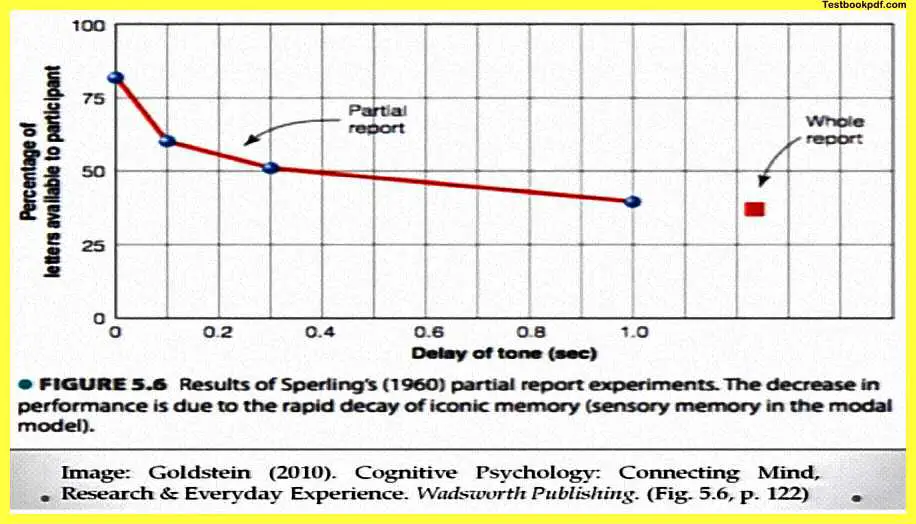
So if there is this time gap between the tone and the presentation of letters then the participant is not being able to report it so here is the delayed partial report method this is where you can see that from the whole report to partial report to delayed the whole report is the lowest at the right part and the partial report around in the middle and the accuracy is much better so spelling concluded from these results that a short-lived sensory memory register operates or registers all or most of the information that first hits our visual receptors but that this information decays within less than a second so if the tone is coming one second later than the presentation of this participants do not have any clue of which information they have to report.
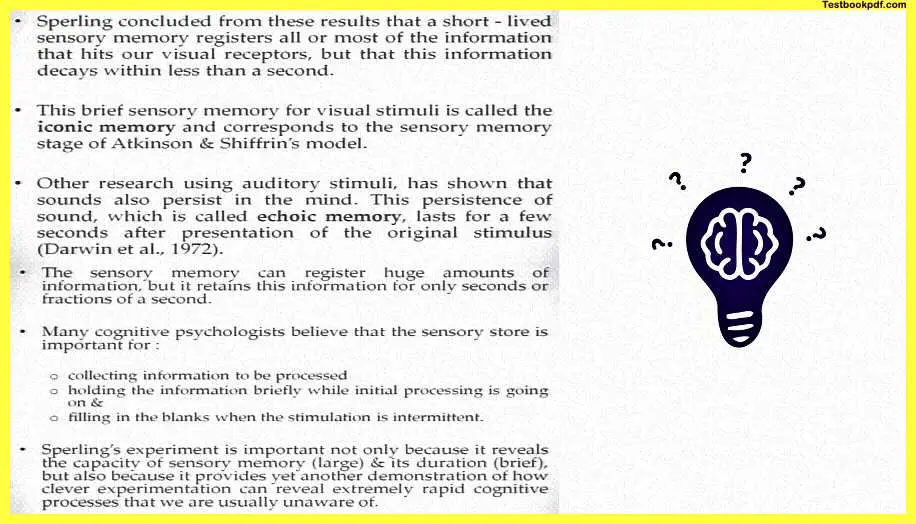
So their reporting time or accuracy kind of goes up to what the whole report method was like so this brief sensory memory for visual stimuli has been referred to as iconic memory and it corresponds to the sensory memory for vision and it kind of falls in the sensory memory stage of Atkinson and shifts model other research has also been done using auditory stimuli and it has been shown that sound also persists in mind but the persistence of this is referred to as the echoic memory it kind of lasts for a few seconds after the presentation of the original stimulus in that sense the range of echoic memory or auditory sensitive memory is slightly longer than that of visual sensory memory or iconic memory.
Now the sensory memory resists can register huge amounts of information but it retains this information only for very few seconds or fractions of second many cognitive psychologists believe that the sensory store is important for at least three things first is collecting the information that has to be processed second is holding the information briefly while the initial process is going on and third is fill in the blanks when the stimulus is interpreted so something that was happening in frame rates and while you watch a particular movie spoiling experiment is important not only because it reveals the capacity of one the capacity of sensory memory because it is much larger and its duration which is much briefer but also provides yet another demonstration of how clever experimentation can actually tell you something very important about this cognitive and mental phenomena this is all about sensory memory in the next article I will talk to you about short-term memory.
Read also:
Attention in Psychology Pdf (Part-1)
Attention Psychology Pdf (Part-2)
Attention Psychology Example (Part-3)
